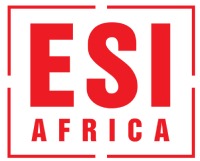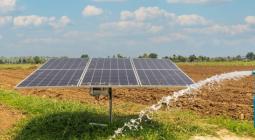Eskom: 3 major changes to registering SSEG systems
Embedded generation (EG) installations with an output smaller than 1MVA (1,000kVA) are defined as small scale embedded generators.
South Africans who generate their own electricity or intend doing so through Small-Scale Embedded Generation (SSEG) systems like rooftop solar will no longer have to have it signed off by an Engineering Council of South Africa (ECSA)-registered professional.
This is one of a raft of major changes to the process announced by Eskom this week as it looks to encourage more people to register their SSEG network.
“The major change, finalised last month and effective from 1 October 2025, is that Eskom’s residential customers may now have their systems signed off by a Department of Labour (DoL)-registered person (excluding single-phase testers), and an Engineering Council of South Africa (ECSA)-registered professional is no longer required,” the utility said.
Drive by Eskom to encourage registration of SSEG systems
It is estimated that more than half of rooftop solar PV systems in South Africa are not registered.
In February, Eskom said that since 2020, it has actively engaged with customers and other stakeholders to raise awareness about the importance of registering SSEGs.
SSEG can connect and operate in parallel with the network (by synchronising with the grid).
Embedded generation (EG) installations with an output smaller than 1MVA (1,000kVA) are defined as small scale embedded generators.
In South Africa, solar PV is the main technology type used as an SSEG, but wind, biogas electricity, hydro power and diesel generators connected to the grid are also forms of embedded generation.
According to the SA Local Government Association (Salga) Status of Embedded Generation in South African Municipalities report (December 2023), embedded generator (EG) installations on South African distribution networks are accelerating.
Now Eskom says it has simplified the compliance and registration process for customers who generate their own electricity through SSEG systems.
“The aim is to make it easier, safer and more affordable for households and small businesses to connect legally to the national grid as required by the National Energy Regulator of South Africa (NERSA).
“Eskom has been working on the SSEG framework since 2015 with industry stakeholders, including the South African Bureau of Standards (SABS), South African Photovoltaic Industry Association (SAPVIA), Association for Municipal Electricity Distributors (AMEU), National Rationalised Specifications (NRS) Standing Committee, IPP conferences, Eskom IPP stakeholder meetings, and has developed a simpler and more affordable solution for customers that still maintains a stringent focus on safety.”
Eskom goals
This follows a review of compliance and safety requirements as well as a stringent due diligence process, pending the expected changes by the South African Bureau of Standards (SABS).
“Eskom recognises that many South Africans are eager to participate in the clean energy transition. Our goal is to make it as simple, safe, and cost-effective as possible for customers to connect legally, while ensuring the stability and safety of the national grid.
“We have been working hard with our industry stakeholders to remain at the leading edge of safety requirements,” said Eskom Acting Group Executive, Distribution, Agnes Mlambo.
Adhering to NERSA regulations
Eskom is encouraging customers to come forward and register their systems to meet NERSA’s legal requirements.
“Registration not only ensures compliance and safety but also positions customers to benefit from future programmes that reward clean energy generation,” added Mlambo.
In line with NERSA regulations, all businesses and households with embedded generation systems of less than 100kVA, including solar PV systems, are required to register with Eskom (electricity licensee), even if they do not export electricity to the grid.
However, customers who are fully off-grid and not connected to Eskom’s network are not required to register, provided they can demonstrate that their systems operate independently of Eskom’s supply.
“As a licensed electricity distributor, Eskom ensures that all customer connections, whether for energy use or generation, comply with the technical codes, standards, and safety conditions as required by NERSA.”
Before 2019, only medium-voltage customers (above 1,000V) were permitted to operate embedded generators in parallel with Eskom’s/licensee’s network.
In April 2020, Eskom expanded this to include low-voltage customers, allowing residential and small business users to install SSEG systems.
In the absence of formal low-voltage regulations, the distribution industry has relied on the NRS097 standards to ensure safe and compliant installations.
Initially, Eskom required systems to be signed off by an ECSA-registered professional.
“However, this process could be costly for some homeowners, as fees for professional sign-off vary across providers and are outside Eskom’s control,” said the utility.
3 simplified compliance requirements
Customers said the previous process felt complicated and costly. Eskom has thus responded by streamlining compliance and introducing cost relief measures so “that more South Africans can participate in the clean energy transition with confidence.”
- No registration or connection fees for households with solar systems up to 50kVA, until March 2026.
- Faster sign-off process: residential systems can now be certified by a Department of Labour registered person (Installation Electricians and Master Installation Electricians), and this excludes single-phase testers.
- Clear, simpler requirements: a valid Certificate of Compliance and a basic EGI test report (to be signed off by a registered person).
New processes meant to make SSEG uptake cheaper
“This means customers can save over R9,000 on connection costs for a typical 16kVA rooftop solar system. Households with solar PV systems up to 50kVA continue to be exempt from registration fees and installation of smart meter fees.
“Non-residential SSEG customers will continue to benefit from the previous year’s connection charges, ensuring continued cost savings,” the utility said.
Eskom said registered customers are also well-placed to benefit from future tariff structures that make it possible to sign up for demand response products and pay less for electricity by shifting energy use to lower-cost periods.
“In addition, those who export power back to the grid benefit from the NERSA-approved Homeflex tariff, which provides credits for energy exported, further improving the return on their investment.
“Eskom continues to urge all SSEG customers to register their systems to ensure safety, regulatory compliance, and access to future benefits such as energy export.”
The move to streamline the SSEG registration process has unfolded against a backdrop that has seen a major uptake of the technology in recent years by South Africans frustrated by loadshedding and increasing electricity costs.
Significant uptick in SSEG market
The results of the December 2023 Salga survey showed that the number of municipal distributors allowing EG onto their networks has “risen significantly from 10 in 2016 to 71 in 2023.”
Whilst significant progress has been made by many municipalities since 2020, concerted efforts are still needed to ensure that more municipal distributors are able to accommodate EG, said the report.
According to the Salga survey, 43% of a total of 165 municipal distributors allow EG onto their network; 41% have official application processes and 26% have approved EG tariffs.
These figures refer to municipal distributors and Eskom distribution, driven by increasing electricity tariffs and system reliability concerns , combined with steadily decreasing solar PV technology costs.
Eskom said it continues to urge all SSEG customers to register their systems to “ensure safety, regulatory compliance, and access to future benefits such as energy export.”
Cover photo: americanspirit©123rf



